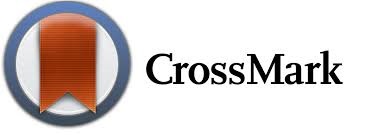If you are interested in learning more about how ORCID continues to grow and establish itself as an important resource for the global research community, be sure to check out the ORCID Annual Report for 2018, published on March 6th, 2019.
Meadows, Alice; Laurel, Haak; Buster, Michael; Brown, Josh; Buys, Matthew; Demeranville, Tom; et al. (2019): ORCID Annual Report 2018. https://doi.org/10.23640/07243.7811459.v1
There is also a blog post summarizing some of their key achievements, including reaching their 5 millionth registrant milestone in mid-2018. According to the full report: “as of 31 December 2018, 5,806,563 researchers from every country and discipline had registered for an ORCID iD.”
Of particular interest to MSK authors may be the fact that publishers (see page 11) continue to join ORCID, with eight more being added in 2018, “bringing the total to 105 (including 35 associations that are currently using — or planning to use — ORCID in publishing workflows).”
Also noteworthy: “by the end of 2018, with the researchers’ permission, 36,833,675 works had been added to ORCID records, 23,661,921 of which had been added by members.” To put this into perspective, (as of Feb 6, 2019) “PubMed comprises over 29 million citations for biomedical literature from MEDLINE, life science journals, and online books.” As such, the number of overall works cited in ORCID now exceeds the number of citations indexed in PubMed.
For those wondering how most works end up getting into ORCID, this data from the annual report may provide some useful insight: “The top organizations adding works to ORCID records are: Scopus (10,532,602), ResearcherID (4,521,258), Crossref — via two integrations: auto-update and their Search & Link wizard — (3,476,929), and Europe PubMed Central (1,921,838).” In other words, high quality citation records from databases like Scopus, Web of Science (i.e., ReasearcherID), and Europe PMC provide a considerable amount of the citation information.
Crossref, itself a not-for-profit membership organization and one that researchers/authors may be less familiar with, is a utility resource that works with many publishers to supply metadata (among other things) for scholarly works. What this means for authors is that by providing publishers with an ORCID iD at the time of manuscript submission, they are increasing the chance that the subsequent publication later will become connected to the author’s ORCID profile (with their permission), generally thanks to Crossref.
With all of this progress, it is not surprising that more and more organizations are getting on board with ORCID. From the annual report (page 12): “Support for the publishers’ ORCID open letter continues to grow, and, as of the end of 2018, there were 70 signatory organizations, 23 of which are now requiring iDs for authors”.
So if you have not registered for one yet – your publisher may require you to have one the next time you proceed to submit a manuscript for publication. You’re therefore encouraged to use ORCID@MSK to register for one. Please see the MSK Library’s ORCID information page or Ask Us if you have any questions.
